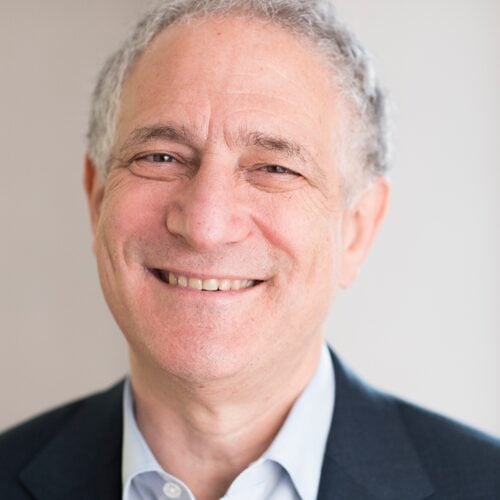For over a decade, histone deacetylase (HDAC) inhibitors have been investigated as anti-cancer agents that play a role in the death or cell cycle arrest of cancer cells. But more recently, researchers have found increasing evidence that HDAC inhibition can alleviate symptoms of ALS. This is particularly the case for histone deacetylase 6 (HDAC6), thereby making it a target for potential gene therapies.

While 90% of ALS cases are sporadic, many of the remaining 10% of familial cases are related in some way to mutations in a handful of specific genes, including:
The effect of HDAC6 inhibition has been studied on all of these genes. While researchers have found some benefit of HDAC6 inhibition in genetic models of ALS, the exact mechanisms of this interaction are under investigation.1
What do Histone Deacetylases do?
In a cell, DNA is typically found packaged with special proteins called histones. The tightness of the DNA-histone interaction dictates the level of gene expression. Chemical modifications to histones can alter the DNA-histone interaction and modify gene expression. HDACs are enzymes that remove a chemical modification called an acetyl group from a histone. This deacetylation of a histone causes DNA to wrap more tightly around a histone core, making it difficult for transcription factors to bind to that DNA. The result is a decreased level of gene expression, aka gene silencing. Inhibitors would therefore increase gene expression.
How many HDACs exist?
In humans, there are 18 HDAC enzymes. These are divided into four classes:
- Class I Rpd3-like proteins (HDAC1, HDAC2, HDAC3, and HDAC8)
- Class II Hda1-like proteins (HDAC4, HDAC5, HDAC6, HDAC7, HDAC9, and HDAC10)
- Class III Sir2-like proteins (SIRT1, SIRT2, SIRT3, SIRT4, SIRT5, SIRT6, and SIRT7)
- Class IV protein (HDAC11)
Some HDACs possess activity only for histones while others may also deacetylate (the removal of one or more acetyl groups from a molecule) nonhistone proteins. This makes determining the precise function of an HDAC even more complex.2
How are HDACs activated?
There are multiple mechanisms by which HDACs are activated. For example, researchers have found that inositol phosphates can regulate Class I HDAC complexes, but the exact mechanism remains unknown.3
Class II HDACs have distinct cellular localizations (they are predominantly cytoplasmic) and biological functions. More specifically, research has shown that the HDAC6 enzyme itself can be activated by multiple factors, from TGFβ1 stimulation4 to epidermal growth factors (in a study on corneal epithelial wound healing).5
HDAC6 is the only HDAC to have two catalytic sites (CD1 and CD2) and a ubiquitin-binding site.6 It is also known for its deacetylation of α-tubulin, which appears to have neuroprotective effects. While the precise mechanisms are still under investigation, it’s thought that HDAC6 is involved in the clearance of misfolded proteins and could also be crucial in regulating the cellular response to the formation of cytotoxic protein aggregates.7
Does HDAC6 deletion slow disease progression?
Since HDAC6 can regulate cell processes impacted in neurodegenerative disease, researchers are currently investigating the relationship between its pharmacological inhibition or genetic silencing and various expressions, onset times, and lifespans in ALS patients.
Ongoing research into the role of HDAC6 in ALS – and how its deletion or suppression may slow disease progression – includes studies on the following topics:
- The role of HDAC6 in the aggregation of mutant SOD1 via increased tubulin acetylation.8
- The role of HDAC6 as a stress granule (SG) component and the localization of the FUS and TDP-43 genes to these SGs.9
- The related role of HDAC6 as a TDP-43 deacetylase and the aggregation of TDP-43 when HDAC6 is disrupted.10
- How the overexpression of HDAC6 can increase poly-GA levels in cultured cells and reduced levels of HDAC6 can lower poly-GA accumulation in mouse models when the C9orf72 gene is implicated in ALS.
- How silencing HDAC6 may restore axonal transport defects in FUS-ALS patient lines.11
- How TDP-43-induced neurotoxicity contributes to ALS-related ubiquitin-proteasome system (UPS) impairment and the role of HDAC6 overexpression in suppressing the toxicity of this impairment.12
- How the inhibition and silencing of the HDAC6 gene in FUS-ALS patients may restore axonal transport defects using antisense oligonucleotide (ASO) treatment as well as reverse a disturbed association between the endoplasmic reticulum and mitochondria.
HDACs are difficult to drug given their lack of specificity. Inhibition of these enzymes can result in changes in expression of many genes, some of which may ultimately slow down neurodegeneration and some of which may lead to neuroprotection. For example, inhibition of HDAC6 can protect against toxicity resulting from the accumulation of damaged or misfolded proteins while also inducing axonal transport deficits. As a result, it requires patience, technical skill, and a means of sharing research with the rest of the international research community to monitor advances in knowledge and prevent the unnecessary duplication of research.
If researchers worldwide can continue to build on their knowledge of the HDAC6 protein-coding gene’s full functionality, HDAC6 could become an increasingly valuable target for gene therapies in ALS patients.

The Future of Therapeutics for ALS
HDAC6 is an important therapeutic target worthy of more research and funding. Target ALS has funded research on the potential therapeutic use of HDAC inhibitors and related therapies.13 Along with funded colloquia and Research Core Facilities, Target ALS has committed to supporting the international research community in its quest to understand the various causes of ALS and the biological mechanisms that may stop it from affecting lives.
Frequently Asked Questions
What is the therapeutic potential of HDAC6 in ALS?
Researchers have observed that ALS patients with a FUS mutation experience abnormalities such as cytoplasmic FUS localization, axonal transport defects, and an altered association between cells’ mitochondria and endoplasmic reticulum (ER). The silencing of HDAC6 through gene therapy appears to correct the latter two defects. Therefore, researchers are exploring gene therapies that would inhibit the production of HDAC6 as a means of treating ALS symptoms or preventing it from progressing.
What neurotransmitter does ALS affect?
In ALS patients, an imbalance of gamma-aminobutyric acid (GABA) and raised levels of glutamate may play roles in progression of the disease.14
Sources:
1. Lazo-Gómez, Rafael et al. (5 Dec 2013). Histone deacetylases and their role in motor neuron degeneration. Frontiers in Cellular Neuroscience. https://pubmed.ncbi.nlm.nih.gov/24367290/
2. Seto, Edward, and Yoshida, M. (1 Apr. 2014 ). Erasers of histone acetylation: the histone deacetylase enzymes. Cold Spring Harbor Perspectives in Biology. https://www.ncbi.nlm.nih.gov/pmc/articles/PMC3970420/
3. Watson, P., et al. (25 April 2016). Insights into the activation mechanism of class I HDAC complexes by inositol phosphates. Nature Communications. https://www.nature.com/articles/ncomms11262
4. Deskin, B., et al. (8 Aug 2016). Requirement of HDAC6 for activation of Notch1 by TGF-β1. Scientific Reports. https://www.nature.com/articles/srep31086#citeas
5. Wang, J., et al. (June 2010). Effect of EGF-Induced HDAC6 Activation on Corneal Epithelial Wound Healing. Investigative Ophthalmology & Visual Science. https://iovs.arvojournals.org/article.aspx?articleid=2186061
6. Hai, Yang, and Christianson, DW. (2017, 25 Jan ). Histone deacetylase 6 structure and molecular basis of catalysis and inhibition. Nature Chemical Biology. https://www.ncbi.nlm.nih.gov/pmc/articles/PMC4990478/
7. Klingl, YE., et al. ( 2021, March). Recent advances in ALS pathogenesis and therapeutics. British Journal of Pharmacology. https://bpspubs.onlinelibrary.wiley.com/doi/full/10.1111/bph.15217
8. Gal, J., et al. (2013). HDAC6 regulates mutant SOD1 aggregation through two SMIR motifs and tubulin acetylation. Journal of Biological Chemistry. https://doi.org/10.1074/jbc.M112.431957
9. Colombrita, C. et al. (2009). TDP-43 is recruited to stress granules in conditions of oxidative insult. Journal of Neurochemistry. https://doi.org/10.1111/j.1471-4159.2009.06383.x
10. Cohen, T. J., et al. (2015). An acetylation switch controls TDP-43 function and aggregation propensity. Nature Communications. https://doi.org/10.1038/ncomms6845
11. Guo, W., et al. (2017). HDAC6 inhibition reverses axonal transport defects in motor neurons derived from FUS-ALS patients. Nature Communications. https://doi.org/10.1038/s41467-017-00911-y
12. Lee, S., et al. (2020, 17 Nov ). The Role of HDAC6 in TDP-43-Induced Neurotoxicity and UPS Impairment. Frontiers in Cell and Developmental Biology. https://www.frontiersin.org/articles/10.3389/fcell.2020.581942/full
13. Faza, R., et al. (2021, 8 Feb). HDAC6 Inhibition restores TDP-43 Pathology Andaxonal Transport Defects in Human Motor Neurons with TARDBP Mutations. The EMBO Journal. https://doi.org/10.15252/embj.2020106177
14. Diana, A. et al. (2017, 9 Jan). Gamma aminobutyric acid (GABA) modulators for amyotrophic lateral sclerosis/motor neuron disease.” The Cochrane Database of Systematic Reviews. https://www.ncbi.nlm.nih.gov/pmc/articles/PMC6953368





